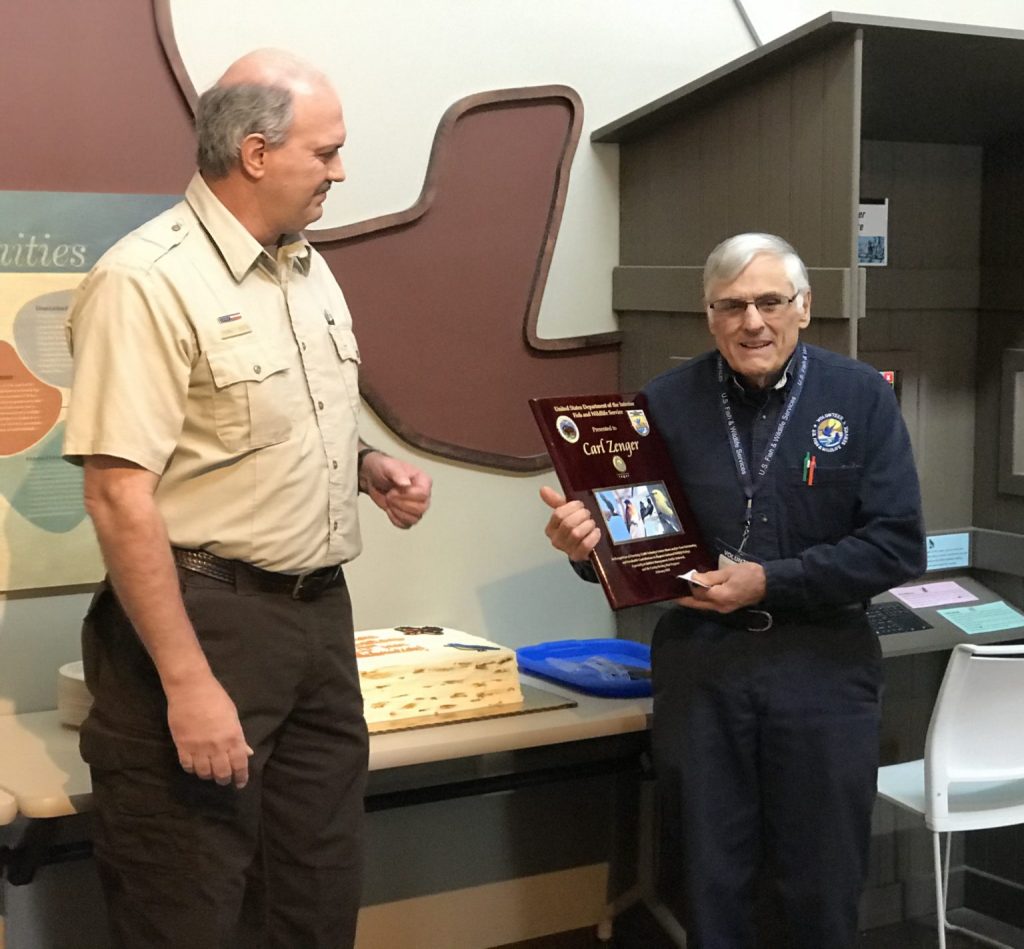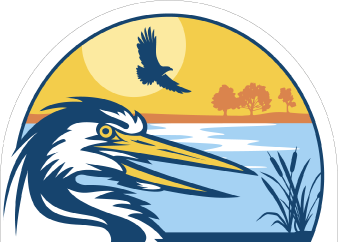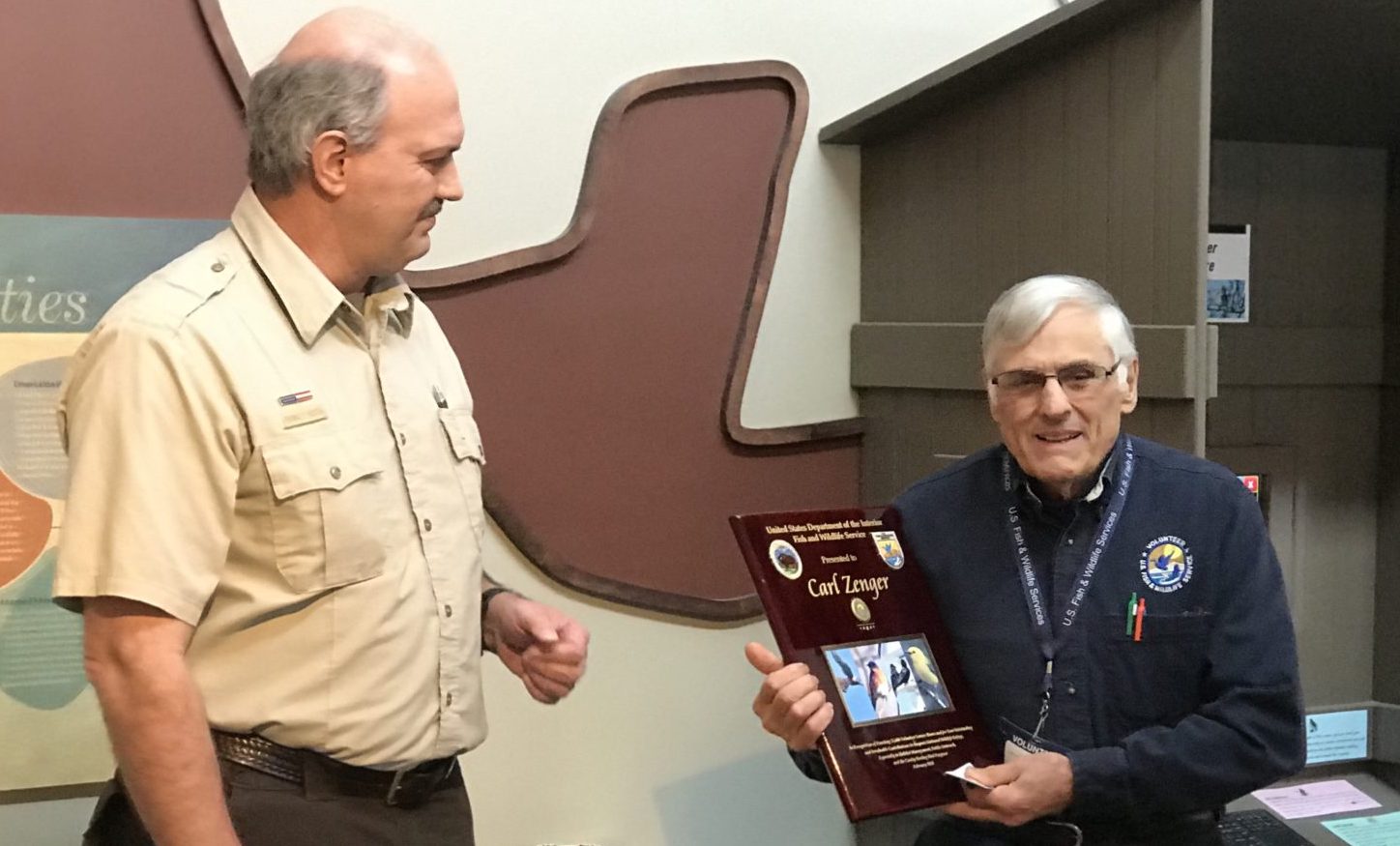
35,000. Yes, that is a 35, then 3 zeros. It has taken Carl 23 years to accumulate that amount of time. To put some perspective on that number, that equates to 1,458 days, or if you prefer, 6.7 years straight (if he didn’t have to take lunch breaks). For comparison, that’s about how long it took the Galileo spacecraft to get from Earth to Jupiter. We’re thankful Carl didn’t volunteer at NASA.
Those numbers are very impressive, but they just scratch the surface of the true impact Carl has made volunteering at INWR. Let’s take a look at how Carl likes to spend some of his spare time…
Click here to become a member!
Click here to donate!

Carl began his work at INWR in 1997 due to his interest in the eastern bluebirds. Since that time, he has made a tremendous impact on the local populations of many birds, including eastern bluebirds and purple martins. He has made, installed, and monitored over 120 bluebird boxes. Carl spearheaded the restoration of the purple martin colony that was present at INWR in 2001 to the impressive program that it is today. Based on data that Carl and others have posted to the FINWR website since 2012, counting just the Iroquois sites, over 3,700 purple martins have been banded, with over 3,500 fledged. And that’s data from only 7 years.
We all know Carl is a bird-lover, but even he needs a break from our feathered friends once in a while. In 2001, Carl became a certified tractor operator. He personally mows about 200 acres every year. If we extrapolate that out, that comes out to 3,800 acres. The entire refuge is around 11,000 acres, so Carl has mowed the equivalent of 1/3 of it. Or to put it another way, that is about the same as mowing 2,879 football fields. Considering there are only 30 football stadiums in the US, Carl could have mowed them all almost 100 times. But of course this mowing maintains habitat for ground nesting birds, pollinators, mammals, and native plant species, so he’s even helping our birds out when he’s on a bird-break.

What about wintertime? Surely there’s not much to do at the refuge after everything freezes up and all our migrators have passed on through. Well, Carl manages to keep busy. He’s engineered and installed a winch system for our 20 kestrel boxes so the weekly checks during nesting season can be done safely without the use of a ladder. And maybe you’ve heard about this little program done each year at the refuge, called Spring Into Nature? Well, every year, FINWR gives away various habitat houses (bird houses, toad abodes, butterfly houses, bird feeders, etc.) that children can put together and take home from the event. Carl helps oversee the design and construction of these items, as well as helping to build some of the habitat structures FINWR sells in our shop and at events. Winter goes pretty fast!
The Fish and Wildlife Service recognizes volunteers with service pins when certain thresholds are met. Carl was recognized by refuge manager Tom Roster on February 1st at the Iroquois Observations event for this tremendous milestone. Carl received a commemorative plaque, and a 35,000 hour pin. According to Tom, only two 35,000 hour pins have ever been made – one for Carl’s plaque, and one for Carl.
Carl’s impact is seen and appreciated by everyone who works at, volunteers at, or has even visited the refuge. In the end, all these numbers add up to an amazing contribution to conservation and our environment through Carl’s dedication and effort.
To paraphrase Carl: “Here’s to 35,000 more hours!”


